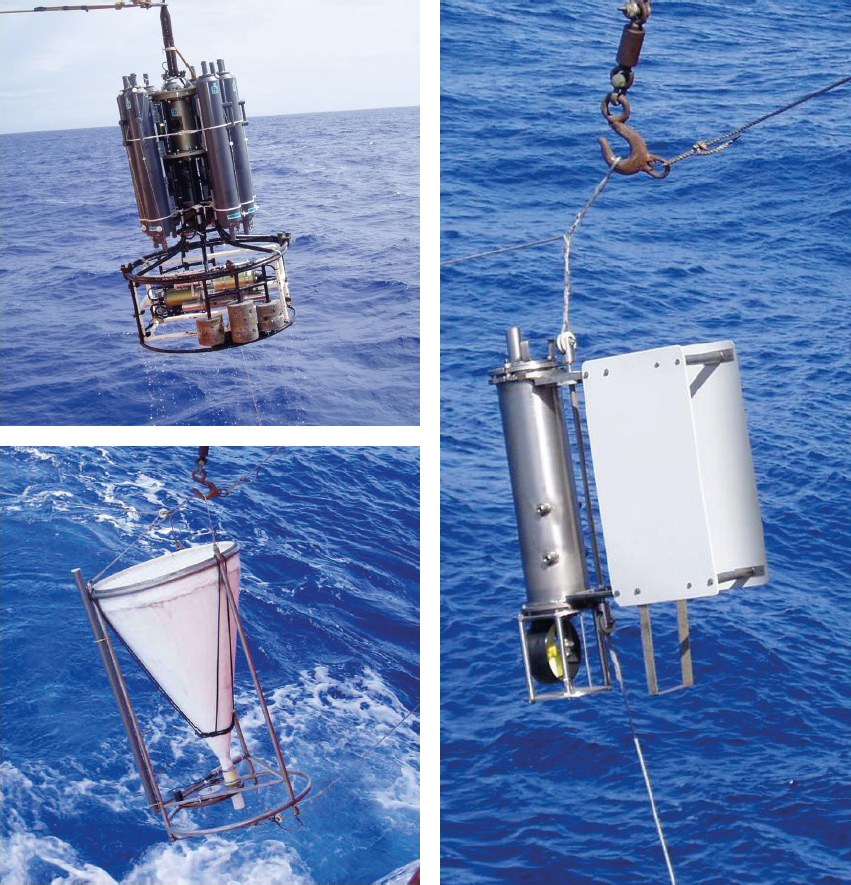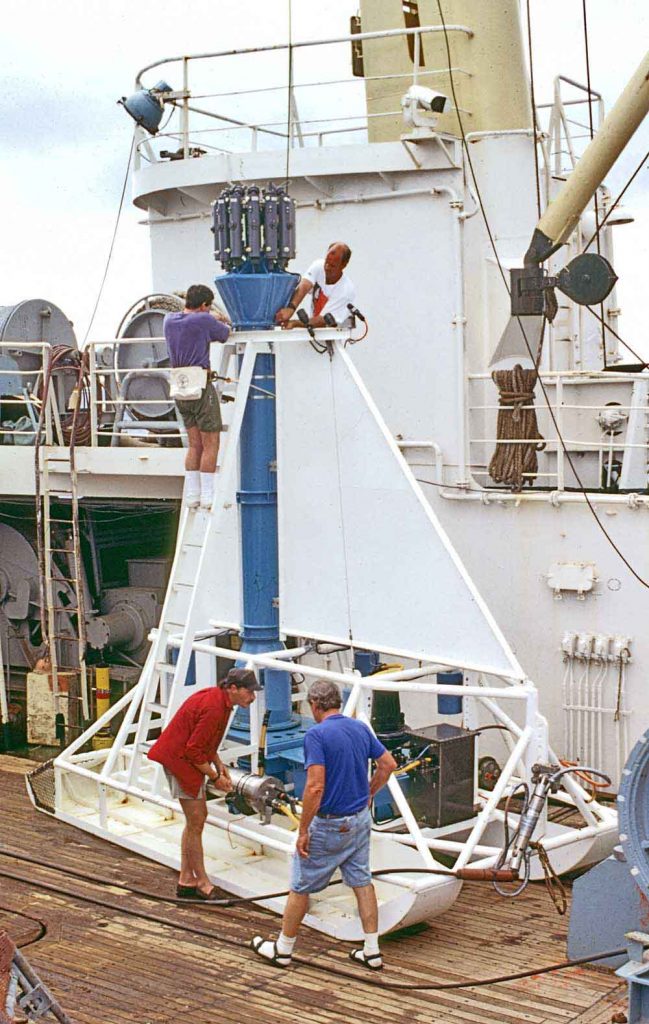The comprehensive environmental program conducted by the IOM began in 1994 and consisted of two main phases: pre-contract phase (1994 ‐ 2000), and contract phase, which includes research carried out after signing the contract for exploration with the International Seabed Authority (2001 to present time).
Pre-contract phase
Baseline studies along the so‐called reference transect crossing a considerable portion of the IOM claim area (over 330 km long) were conducted. The in situ Benthic Impact Experiment (BIE), involving scaled stressing to benthic communities and their habitat, was conducted in 1995 and followed by monitoring of the impact site in 1997, 2000 and 2014. The entire IOM BIE program resulted in the gathering of an extensive data set on the abundance and composition of the meiobenthos. During this phase a particular emphasis was given to gather data on physical and chemical oceanography; a total of 14 CTD stations located along the Reference transect were surveyed twice, in 1994 and 1995; near bottom currents were measured over the eight months’ period at four mooring points. For the first time, macro benthos in the IOM claim area was studied in 1994 and 1997, and taxonomic identification, densities, and vertical distribution were analyzed for seven sediment cores, epibenthic megafauna in nodule‐bearing and nodule‐free areas were examined using the bottom photographs taken along the transects having a common length of about 70 km.
Contract phase
The new phase of the IOM environmental project has started since 2001, after signing a contract with the ISA for the exploration for polymetallic nodules. According to the contract’s standard clauses, the goal of this study is to gather the environmental baseline data necessary for the determination of the environmental baselines used for assessing the likely effects of mining activities on marine environment.
During the contract phase, the IOM carried out four research expeditions in 2001, 2004, 2009 and 2014, where sediment samples were retrieved by box-corer from a total of 364 stations. The following parameters of sediments were studied: pH, Eh, grain size, bulk density, water contents, heavy metals, opal and organic matter. The data were all analyzed at specific layers. Pore waters from the same sediment layers were also examined for nutrients and metals. Epibenthic megafauna assemblages and its biogenic traces were analyzed basing on sets of images taken in 2001, 2009 and 2014 by deep towed camera. In 2001 and 2014, 204 biological samples were collected in total. The composition of the megafauna showed that they mainly consist of 6 taxons (Xenophyophorida, Porifera, Ophiuroidea, Actiniaria, Echinoidea, Holothuroidea); nevertheless, nodule‐free seafloor was characterized by a less abundant megafauna (averaging 274 inds/ha) than that inhabiting the nodule‐bearing areas (averaging 355 inds/ha).
Pursuant to the ISA environmental recommendations and guidelines the IOM is currently engaged in classification and systematization of all available data and information on its exploration area marine environment, using six groups of parameters: ocean physics, ocean chemistry, sediment properties, biological communities, bioturbation and sedimentation.
* * *
The IOM during its lengthy research activities has thoroughly studied the environmental background as well as the potential impact of mining on marine organisms. Geological data concerning the abundance of the nodules and economic pre-feasibility studies prove that the actual mining works would span over only a fraction of the area being the subject of the contract with the ISA. The nature of the deposit guarantees a large amount of area not affected by mining. This strongly promotes the preservation of vital biodiversity in the Clarion-Clipperton Zone.
The Environmental Management Plan for the Clarion-Clipperton Zone approved by the Decision of the 18th Session of the International Seabed Authority introduces 9 zones of particular environmental interest, which together hold a surface area many times greater than the surface of the potential mining. Additionally, the IOM has introduced the impact reference zone and preservation reference zones within its research area, in accordance with the ISA standards.
In these areas a pioneering, constant monitoring of factors which might affect the environment will be conducted. Such a widespread activity in providing advanced technical assistance to the environmentally sustainable exploitation of marine resources has no known equivalent in other types of natural resources exploitation.
Nowadays, the IOM has been conducting numerical studies on the spread of the sediment plume particles lifted up in the course of mining operations as sediment excavated together with the nodules. This might be in particular one of the elements suspected as a potential risk for the natural environment. Preliminary results suggest a quite rapid fading of the sediment plume in time. Simultaneously, advanced conceptual design works on the closed-circulation type vertical transport system are carried out. This solution should reduce the risk of discharges to minimum. Moreover, the potential for the application of bio-renewable and degradable biopolymers as a modifier for rheological and sedimentation characteristics of the slurry and sediment plume is under investigation.
WORK IN PROGRESS



